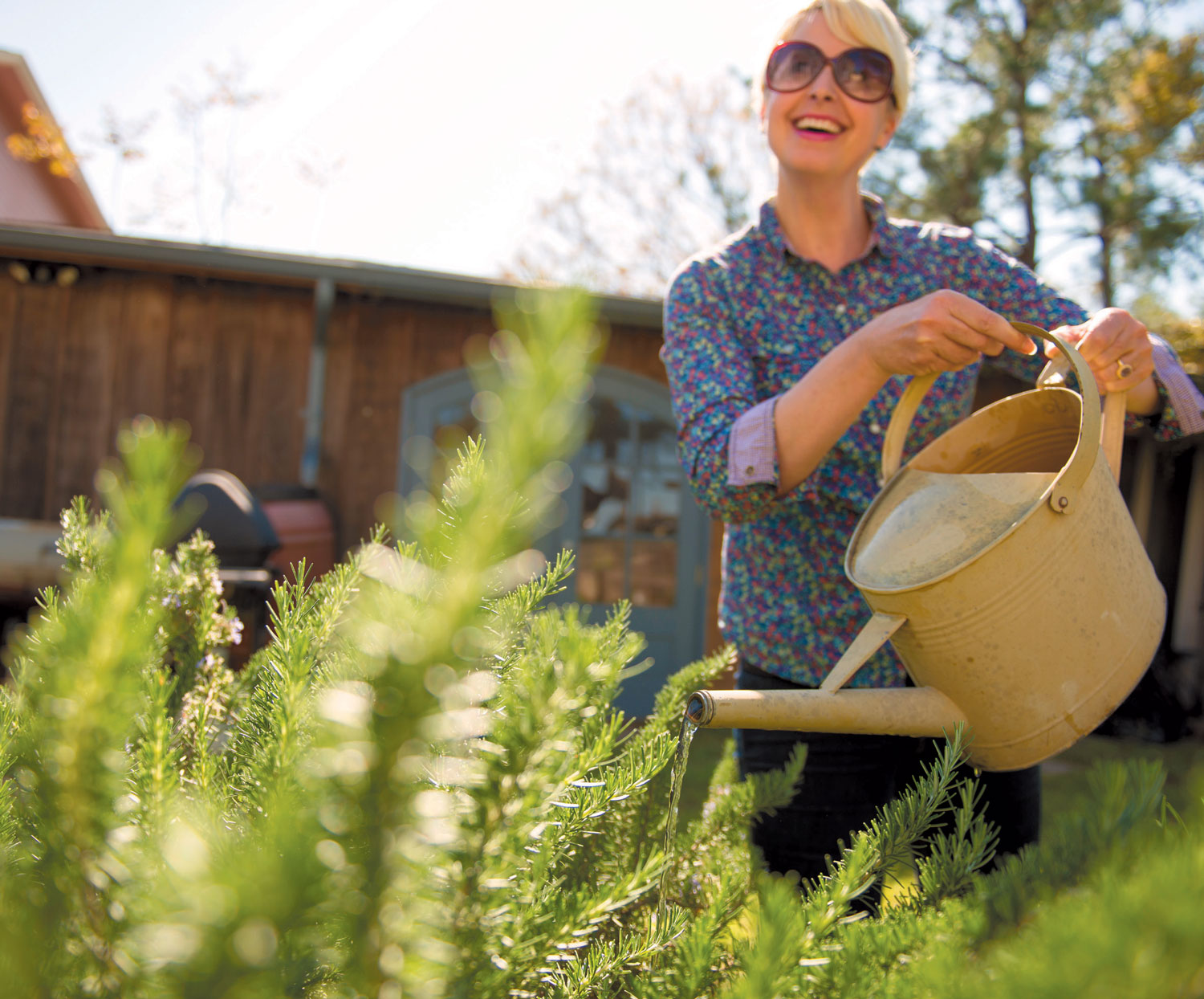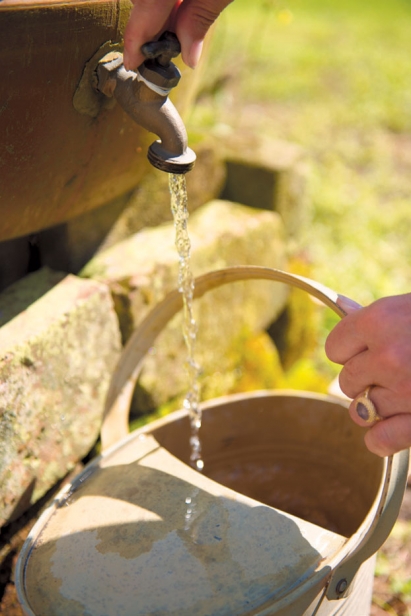Let it Rain: Gardening with Water Barrels
When my husband and I purchased our home in the Carrollton area seven years ago, our plan was to renovate the house, making the kind of modifications that normal people generally require: ensuring reliable sources of heating and cooling, creating a functioning kitchen, replacing rotten flooring and windows.
But after we made an initial round of modifications—which, of course, did not include any of the above—we kept finding ourselves staring at the empty lot next door. It was a field of weeds and grass, a pecan tree, and the remains of a roofless concrete shed that we dubbed the “Bosnia” bunker. We worried another two-story house might be constructed on the lot. If so, we would lose the wonderful light that attracted us to our house in the first place. We’d also feel more hemmed in.
Perhaps you see where this is going. The remains of the fix-up money, and then some, went towards buying a lot. At the closing, the seller said that he’d been considering building a four-unit condo complex on the property. We had dodged a bullet.
Years later, most of the lot remains au natural. We have slowly, at times painfully, carved out two small spaces: a courtyard and a vegetable patch. But we also realized that with even these little cultivated bits, our need for water would considerably rise, and neither of us was keen on the idea of using more energy just so that we could grow our own lettuce or have a pretty pot of flowers. We’re also cheap and didn’t want to pay higher water bills. Like not a dollar more.
We both knew about rain barrels from having grown up in California, where adequate water supplies and rationing are chronic issues. Some people might argue that it doesn’t make a lot of sense to have barrels in Louisiana because it rains so often, but we soon realized that while rain would suffice for most local species, it wasn’t reliable enough to safeguard potted plants and the vegetable patch. We figured there would be an initial investment; however, this would be a one-time cost and that if the barrels saved us even $10 a month, we would recoup our outlay after a few years. We are well past this point now.
My husband, Gavin, contacted a man in Hahnville who sold repurposed 55-gallon plastic barrels*. In their earlier life, these drums had housed ungodly amounts of olive salad. Gavin made a couple of simple modifications, adding a hose bib (spout) towards the bottom of the barrel and a screen across the top in order to keep out leaves. A hose can be attached to the spout, but because there is no water pressure, only gravity, hoses will not spray with any force. Mostly we use watering cans. Having two cans saves time because while we water with one can, the other can fill.
We have a total of five 55-gallon water barrels. Truthfully, we don’t need so many. A normal New Orleans–sized garden can easily make do with two and if you have a only small backyard or veg patch, one may suffice.
A final consideration is placement. Water barrels should be positioned under gutter downspouts; in a heavy rain, a 55-gallon tank can easily fill, but it will save that many gallons from otherwise drenching the ground next to your house. Some may opt for discrete locations or to visibly shield barrels with plants. However, others may want highly visible spots. Richard McCarthy, executive director of Slow Food USA, asked Gavin to install several bright blue barrels, one prominently at the front of his house where Richard had a small vegetable patch. Richard wanted to invite questions from his friends and neighbors. The barrels became part of a dialogue about urban self-reliance: growing easy, pocket-sized organic gardens and reclaiming front yards for edible as well as ornamental purposes.
Buying the lot was a financial tradeoff. We still don’t have reliable sources of heating and cooling downstairs. The back room of our house groans with rot and I admit there are times I think, “Just give me a freaking condo.” But through those deteriorating windows we can look out towards the barely controlled green space and we are thankful it is ours. Best of all, we don’t use any more city water than we did before and our bills have remained low.
* It is much easier to purchase ready-made rain barrels. The best local source we’ve found is New Orleans Bamboo in the Art Egg Studios. Owner Mike Ward is happy to talk details or customize a catchment system.







